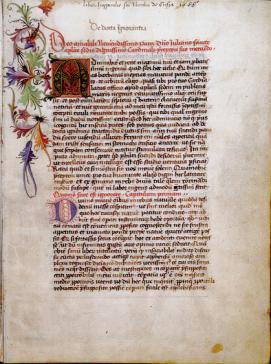Today, mathematical images may seem unrelated to interior religious experience. But during the long passage from the late medieval to the early modern period, geometrical abstraction, quantitative measurement, and spatial magnitude all played important roles, at least within an influential group of Christian contemplatives. In this book project, I examine images and texts that challenge our contemporary assumptions about the religious significance of diagrams and the theological neutrality of the early modern geometrical imaginary. In earlier research on Nicholas of Cusa (d. 1464 CE), I began to encounter a consistent use of quasi-geometrical images appearing both in Nicholas’s medieval predecessors and among early modern readers of his own works, including Charles de Bovelles and Giordano Bruno. These diagrams, designed for use in prayer, inevitably engaged the long disagreement among Christian contemplatives about the status of images. Geometrical figures mix iconic visibility and aniconic invisibility; their spare lines suggest minimal visual forms, but their liminality mediates divine presence. In some cases, they teem with sacred power to enlighten mystics, refute heretics, and reform the papacy. They invite historians to seek new connections in late medieval visual culture that bridge the histories of science, art, and theology.

Nicholas of Cusa, De docta ignorantia (1440), Cod. Cus. 218
Source: Wikimedia Commons
Project
(2022-)
